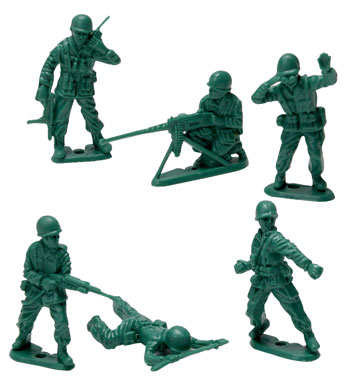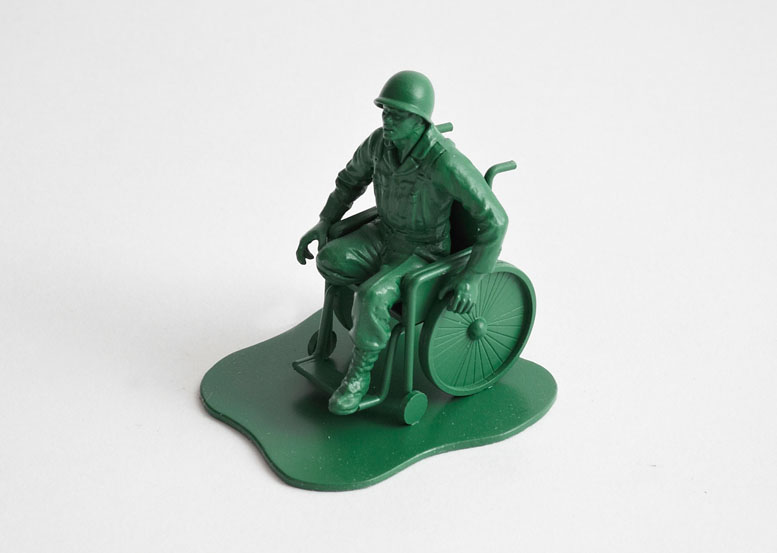I never imagined my childhood play would be a harbinger of real-life disaster. Before I discovered Nintendo, I amused myself with various toys, and countless hours were devoted to “playing war” with what I referred to as my “army guys”those small, forest green, plastic soldiers forever frozen in distinct battle poses. Others may have had more elaborate sets, but my collection of army men (there were no female plastic soldiers), consisted of only a handful of poses. As I remember I had: radioman, grenadier, crawler, crouching machine gunner, standing shooter, and lookout, similar to the first group pictured below:

Image by I remember JFK
I would intricately arrange opposing armies on battlefield carefully peering at my men, delicately positioning each figure, pointing weapons, and constructing groupings, before finally opening fire. Perhaps because each army guy had dozens and dozens of identical types, I never thought of my casualties as individuals. This held true both in my monologues in the heat of the battle, “that grenade-thrower just took out my last machine gunner” and after all the soldiers had fallen.
After happening upon images of a new series of army men, my eyes have been opened to a dark side of this game and my position as indifferent war master, casually killing of and tossing about my soldiers, typecasts, not individual warriors (unlike my GI Joe collection). I can’t help but find myself haunted by Bob Dylan’s “Masters of War” with its biting accusations
You that never done nothin’
But build to destroy
You play with my world
Like it’s your little toy
You put a gun in my hand
And you hide from my eyes
And you turn and run farther
When the fast bullets fly
After destroying my opposing armies, post-war I’d briefly examine the aftermath of the battle, a disarray of fallen soldiers that I’d quickly pile together, throw in my toy bucket, and forget about until some future battle. A creative reworking of these familiar army men by UK-based Dorothy collective prohibits any such forgetting, and it forces us to linger post-battle—what happens to our veterans after “the fast bullets fly.” This collection was inspired a report published in July of 2009 in the Colorado Springs Gazette, a two-part exposé “Casualties of War” (part1, part 2), that details soldiers from single battalion based at Fort Carson in Colorado Springs who, after returning from Iraq, spin out of control, engaging in rampant domestic abuse, rape, suicide, shootings, drug abuse, drunk driving, and assault at alarming rates.
Dorothy repositions the tiny army men in new poses, in so doing, repositions the “toys” as, arguably, masterworks of visual art, and certainly as poignant and massively effective productions of social commentary.
Perhaps the most striking new figure is of a veteran amputee:

Recent comments
2 years 29 weeks ago
2 years 44 weeks ago
2 years 44 weeks ago
2 years 50 weeks ago
3 years 4 weeks ago
3 years 4 weeks ago
3 years 4 weeks ago
3 years 6 weeks ago
3 years 6 weeks ago
3 years 6 weeks ago